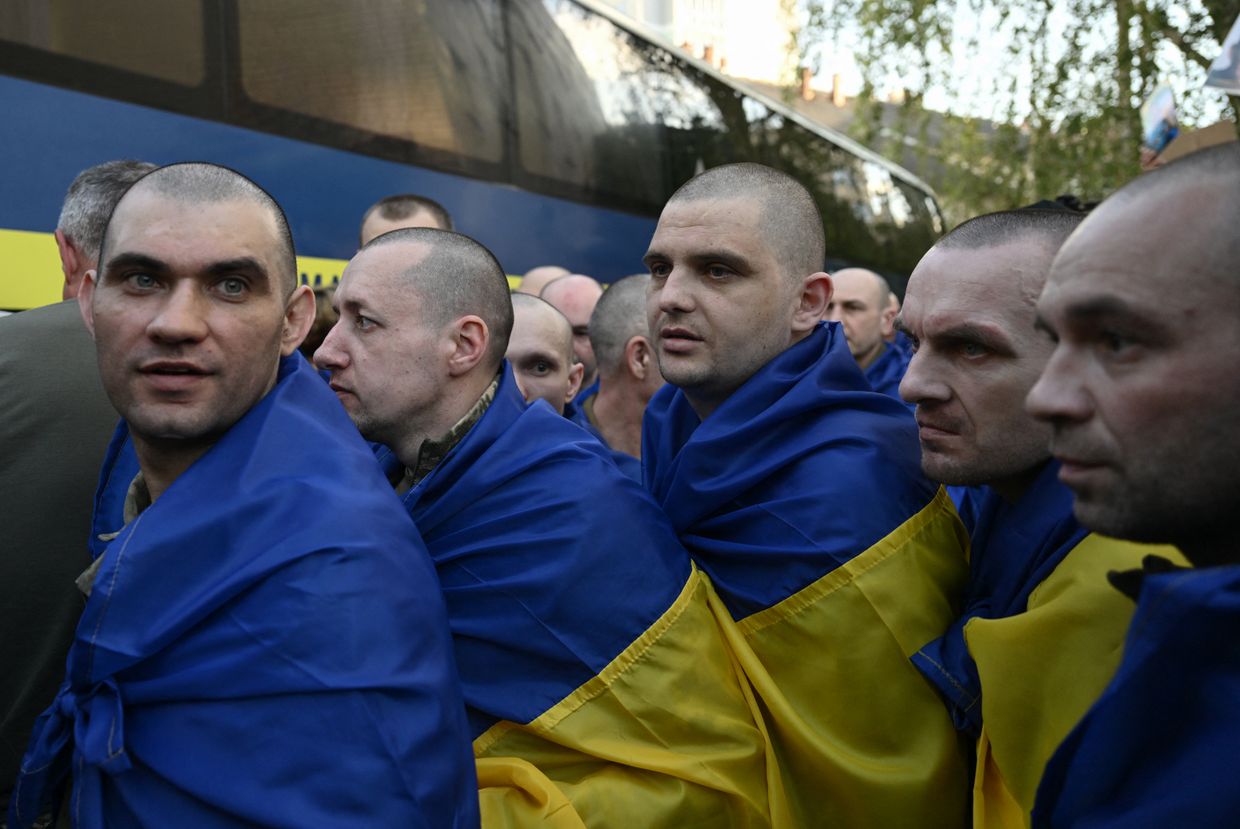Russia’s invasion of 2022 may have shocked the world with the brutality of the fighting but it was only a preview for what was coming in 2023.
To start with, 2022 had variety. It kicked off with a disastrous Russian blitz into Kyiv Oblast, stalled and picked apart by mobile Ukrainians. A successful capture and attempted colonization of parts of Kherson and Zaporizhzhia Oblasts. Then, a frozen artillery duel in Donbas.
By late summer, a Ukrainian feint drew a third of Russia’s available forces to Kherson, exposing their Kharkiv Oblast units to being overrun in a matter of days. Finally, the grinding battle of attrition in Kherson itself eventually forced the Russians to abandon the city.
The year 2023 was one slow battle of attrition after another, with destruction and loss of life on a shocking scale. From Bakhmut to Zaporizhzhia Oblast, Kupiansk and Avdiivka, the Kremlin casually sacrificed hundreds of thousands of men and their equipment.
An unknown number of Ukrainian soldiers and civilians died to oppose them. For them, it was a year that began with hope but ended in uncertainty, when the counteroffensive failed to go all the way. Ukraine likely has operational reserves but it has to be careful how it deploys them. Russia ends the year with initiative regained.
The year was marked by not just brutality but tactical oddity and innovation. By 2023, Ukrainian battlefields had evolved into some unprecedented hybrid of primitive World War I trenches and cutting-edge warfare with drones and smart munitions.
While vehicles continue to be important, for the Ukrainians, 2023 was an infantry war, through and through. The trinity of dismounted infantryman, drone and artillery piece has been the defining model of combat in the past 12 months.
Let’s examine how that played out in the most important battles of 2023.
Defense of Bakhmut
The year started with big attacks on Bakhmut’s flanks, the mining towns of Soledar and Vuhledar. Soledar was destroyed by terrible attrition; Wagner Group claimed the ruins. Meanwhile, the Russian marines’ repeated disastrous attacks on Vuhledar lost over a brigade’s worth of men and vehicles. The town still flies a Ukrainian flag.
The siege of Bakhmut itself was worse — the longest and bloodiest battle of the war to date.
The main attacking force was Wagner Group, with a tough core of well-equipped veterans commanding tens of thousands of recruits from Russia’s prison system, supported by the Russian army’s elite airborne assault units. The defenders ranged from special forces to green recruits and everyone in between.
Ukraine’s top leadership ordered Bakhmut to be held as long as possible, refusing to withdraw even when the city was close to being surrounded in February.
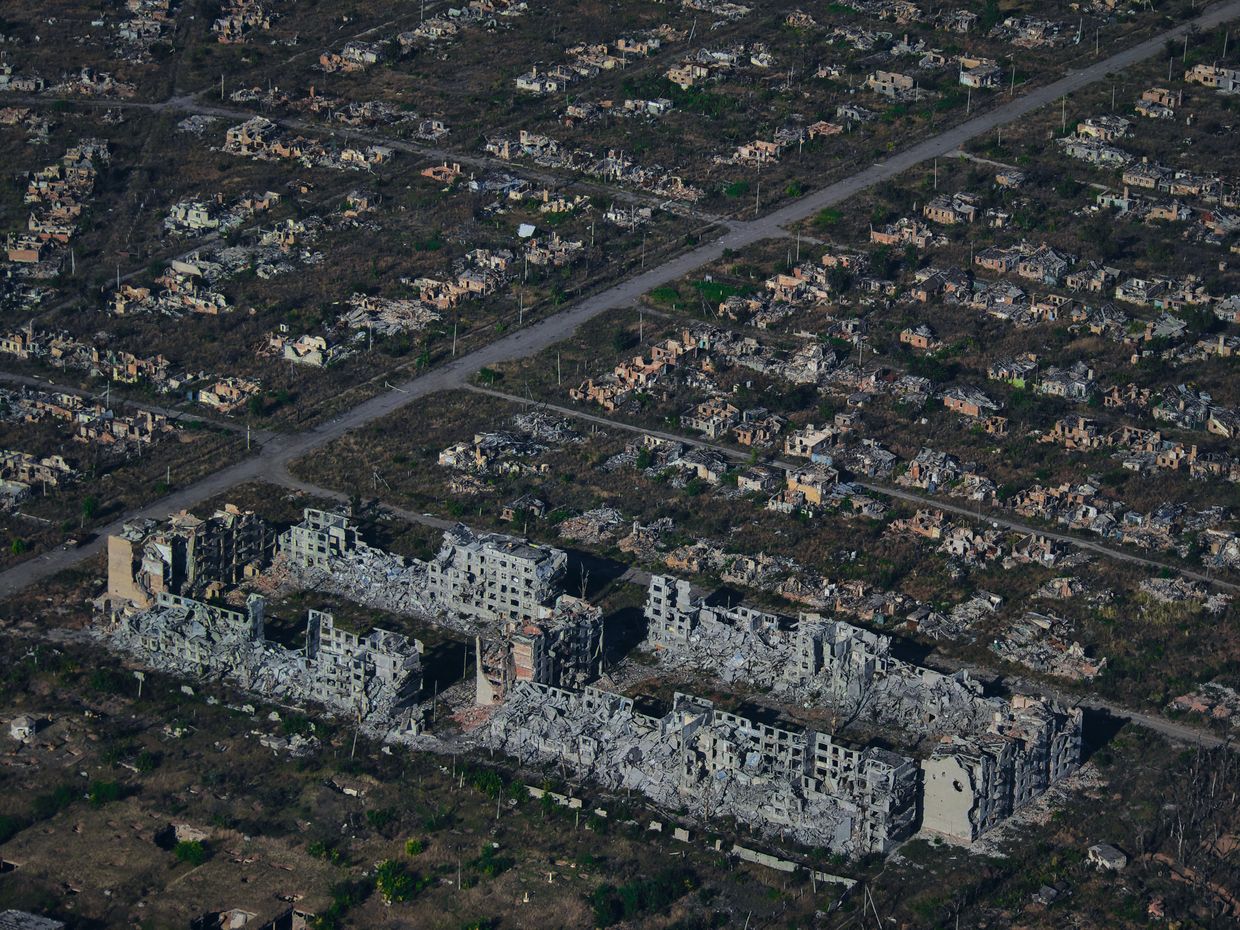
Wagner claimed victory in May and began to hand control to regular forces, by which time, the city was mostly in ruins. Despite being pushed out of the city, the Ukrainians were making substantial gains on its outskirts and would continue to do so.
Fighting in the area never stopped. Capture and recapture of lost territory continues to this day. Ukraine liberated the nearby villages Andriivka and Klishchivka in September, a grueling operation that the Russians are trying to reverse.
Wagner’s pyrrhic success at Bakhmut was the last victory it would ever claim as a unit. With losses high and its convict legion depleted, merc commander Yevgeny Prigozhin decided to blame the Kremlin and rose up against it, only to back down and be killed a few months later.
Wagner’s legacy continues in the profusion of PMC-like irregular units that sprang up in growing numbers during the invasion.
On top of the symbolic value, defending Bakhmut was an attempt to bog the Russians down and bleed them out, making them easier pickings on the counterattack.
Russian losses suggested that the idea had merit though the disposable convicts likely did most of the bleeding, with casualties reported in the tens of thousands. Wagner often ordered them towards certain death again and again, just to see where the Ukrainians were shooting from. Prigozhin reported that 20,000 Wagner fighters died in Bakhmut as of May.

But interviews with defenders revealed that Ukraine’s casualties also looked high. Some units told the Kyiv Independent they had lost between half and two-thirds of their strength in just two months of combat. Medics described people burning or being buried alive as the Russians collapsed their cover on top of them.
The battle exposed the full extent of the lethal disparity in ammo and vehicles, setting the tone for the rest of the year. Mortarmen said they’d run out of their daily ammo in minutes if they fired continuously. Artillerymen had to try to become snipers. A lot of the “mechanized” infantry consisted of dismounted soldiers with modest vehicle support at best.
It was also where worrying glimpses of the Ukrainian military began to emerge. Multiple warfighters said they had been thrown into Bakhmut after a few weeks’ training. Some felt they couldn’t trust their commanders’ organizational skills. Communication between units was often abysmal. Fire support failed to show or inflicted friendly casualties. Inconsistency reigned. Men, overwhelmed, deserted their positions.
In many interviews, junior soldiers questioned if Bakhmut was really worth it. At higher levels, the answer to that question was an unwavering yes.
Attacks from the sky
Above the battlefields, the air war continued to evolve.
In the last quarter of 2022, the Kremlin began trying to destroy Ukraine’s energy infrastructure with massed missiles and drones. The strategy failed. Most energy assets were damaged, not destroyed, and Ukraine has remained electrified.
As Ukrainian intelligence predicted, Russia’s advanced missile stockpiles appeared to start running out early in the year. As missile attacks dwindled, the Kremlin started relying on cheap Shahed-type drones, which it began manufacturing on its own soil, with Iran’s help.
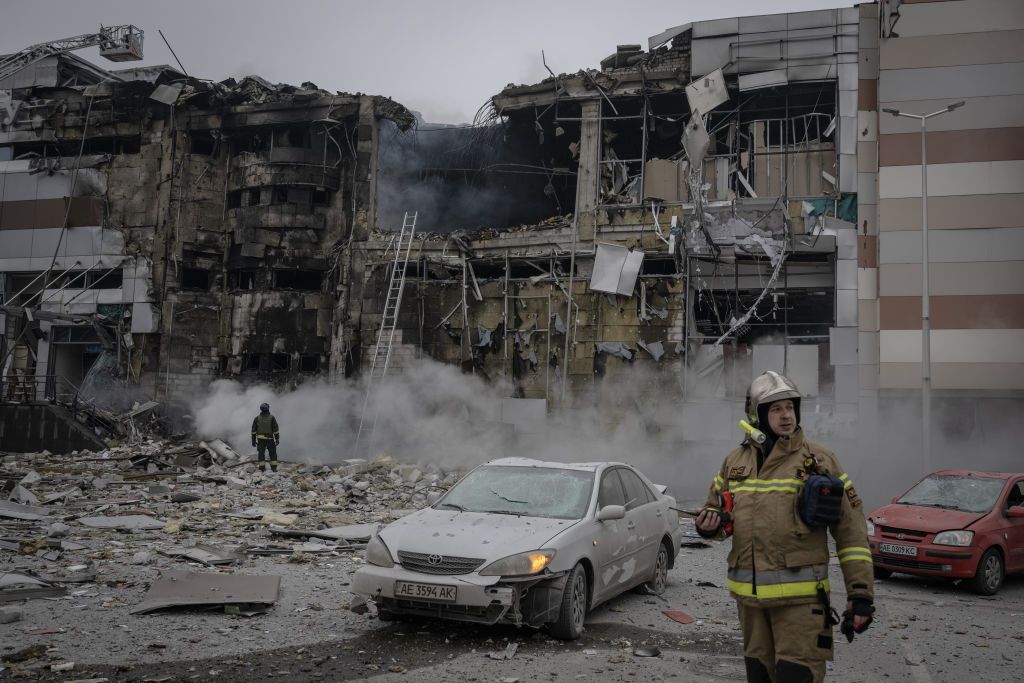
Russia mainly used swarms of drones to attack cities in 2023. The defenders adapted, creating mobile air defense squads and tactical aviation units to knock them down reliably and cheaply.
Russia continues to build batches of heavy hitter missiles and shoot them at Ukrainian cities once they think they have enough. A Dec. 29 attack with 158 missiles and drones was the single largest mass strike to date.
But they’re not above striking with solo missiles closer to the front. In October, a direct hit on a Kupiansk District cafe by a single Iskander killed 59.

Ukraine launched its own innovative program, Army of Drones. By 2023, it approved several dozen designs, which are being produced by Ukrainian manufacturers, from copters to planes to speedboats. It’s unknown how many it makes, but it must be a lot. The country loses 10,000 UAVs per month, according to the Royal United Services Institute.
In 2023, Ukraine used drones to hit targets on Russian soil, such as office buildings in downtown Moscow, airfields, and other nonresidential buildings and infrastructure. They also collapsed another section of the Crimea bridge with weapons developed by the program.

Ukraine also used more conventional missiles donated by allies or modernized from its stockpile. Creative attacks allowed Ukrainian forces to destroy or heavily damage multiple Russian ships and even a submarine. A strike on the Crimea naval headquarters during a staff meeting reportedly killed 34 Russian officers. Ukrainian intelligence sources claimed to destroy half of Russia’s advanced S-400 missile battalions on the peninsula, thanks in part to Russia’s poor organizational doctrine.
As for manned aircraft, Russia has maintained an anemic sort of air superiority above the battlefields, even though its jets regularly get shot down. In 2023, Russian airstrikes increased significantly, making very effective use of gliding bombs, allowing jets to attack from outside the range of Ukrainian air defense.
These bombs would be a pretty serious problem for the big Ukrainian operation that everyone knew was coming.
Counteroffensive preparations
The counteroffensive was the centerpiece of 2023. At the start of the year, it was a source of defiant hope. At the end, it’s a reminder of the uncertainty to come.
Kyiv had intended to launch the counteroffensive in the spring; delays receiving heavy weapons, such as modern Western tanks and fighting vehicles pushed it back to summer.
For example, Germany only budged on providing Leopard 2 tanks (and letting other Leopard 2 users do the same) around the turn of the year. Washington’s waffling on Abrams tanks and the length of preparation for machines and operators pushed delivery until fall. Still other countries had other concerns that took precious months to iron out.
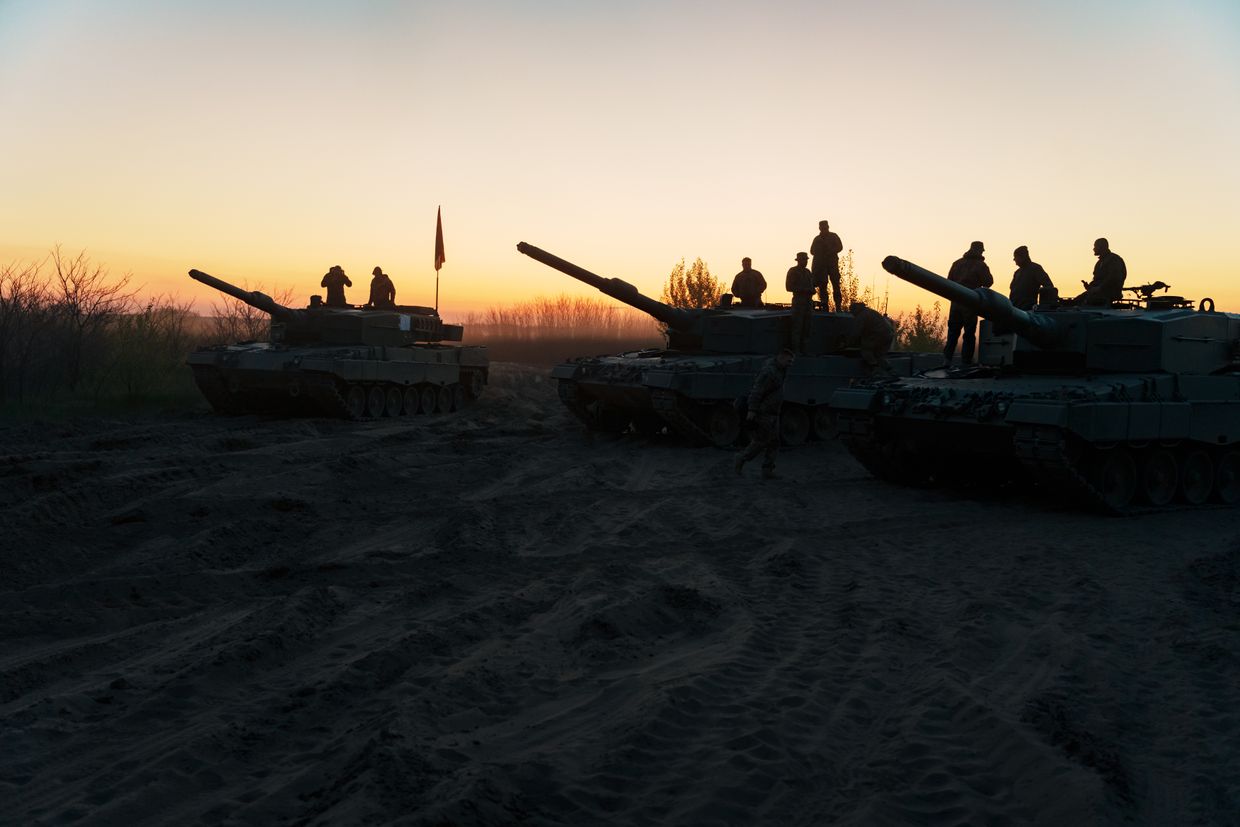
Ukraine would not receive critical cluster munitions or long-range missiles until months into the counteroffensive. The jets it needed for air support didn’t arrive in 2023.
All these delays bought Russian General Sergey Surovikin precious time to build up his defensive lines and sow the earth around them with an absurd number of landmines. That meant every day, the overwhelming operation the allies wanted Ukraine to conduct was pushed further out of its reach.
Ukrainian brigades don’t have experience with theater-scale combined arms operations, which is exactly what the counteroffensive called for. As a result, many brigades were able to strike sequentially but not simultaneously, reducing their impact.
Training and experience were also issues. Ukraine created multiple new brigades from scratch for the operation. In some, most service members had no prior combat experience, but would be expected to perform superhuman feats. Attrition depleted some of Ukraine’s most skilled and motivated fighters, who had done most of the superhuman feats in 2022.
Allies U.S. and Germany provided training but utility ended up limited. Training to NATO doctrine did not prepare new troops for the kind of war they would fight in Ukraine.
In summary: To overwhelm the Russians, the Ukrainians had a force that had no modern air support, no long-rage ATACMS missiles, no cluster munitions, not enough shells, not enough demining equipment, couldn’t afford to lose Western vehicles, with many men who had no prior fighting experience and a training that could barely begin to prepare them for the realities of the Ukrainian battlefield.
Though the year ends inconclusively, what they did next was nothing short of superhuman.
Assault in Zaporizhzhia
Reports that the counteroffensive started were flying around in early June but what really confirmed it was when Russia’s Kherson forces demolished the Kakhovka Dam.
This caused a massive flood that trapped thousands of civilians and swamped the lower eastern bank, complicating Ukrainian troops option for eventually crossing the river and assume defensible positions.


While veteran units counterattacked in Donbas, the main prongs of the counteroffensive in Zaporizhzhia Oblast attacked south towards Melitopol and Berdiansk, trying to cut Russia off from its bases and supply lines in occupied Crimea.
The strategy was as sensible as it was easy to anticipate. Zaporizhzhia Oblast is where the Russians built their thickest lines, in triplicate, with additional fortifications radiating down important roads and surrounding important cities and settlements.
Each of Surovikin’s lines has deep trenches, covered fighting positions for men and vehicles, tank obstacles, and a mine density approaching five per square meter. While Russia didn’t have enough troops to man each line, they could use them to fight and fall back as needed, trading distance for damage.
Surovikin was ousted for his ties to Prigozhin before he could command the Russians’ defense.
Returning as commander, Valeriy Gerasimov did not appear to use the lines as Surovikin likely intended. Gerasimov ordered the bulk of his Southern Military District forces to fight on or in front of the first line and try to counterattack the Ukrainians, preferring to sacrifice men and equipment over captured territory.
For the Ukrainians, all of the above in combination made for a terrifying slog. Attempts to achieve shock and awe failed decisively, right at the start.
Ukraine was forced to switch to a more attritional strategy of cautious advances, relying on infantry supported by artillery as they felt their way through the minefields. The cluster munitions they began receiving in July helped them keep the pressure on.
In the Melitopol direction, the Ukrainian assault force methodically fought its way up to Robotyne and Verbove, raising a flag above Robotyne in August. As of September, the Ukrainians had pierced the Russians’ first defensive line and breached the second.

In the Berdiansk direction, Ukrainian forces also made progress, slowly. They took Staromaiorske and continued trying to push towards Mykilske and Novofedorivka.
Yet, as U.S. intelligence predicted, the Ukrainians had a hard time exploiting these gains. Months of hard fighting exhausted the troops, whose supplies were voraciously consumed by the operation. The arrival of bad weather put a deeper freeze on the Ukrainians’ forward momentum.
General Valerii Zaluzhnyi dealt the final blow to expectations with his op-ed in the Economist that a picturesque breakthrough in the south is not on the horizon.
It’s likely that for the time being, focus will shift east, where the Kremlin has jumped at the chance to regain its initiative.
Defense of Kupiansk and Avdiivka
The Russians first committed their assault force towards Kupiansk in late summer.
The Kupiansk grouping has three tank armies crammed into a tight operational space, getting in each other's way. Ukrainian soldiers on this axis described fighting decently-equipped regular Russian units and had mixed grades on their performance – some high and some middling.
A main objective was to break through at Synkovske, but the Russian units here have struggled against strongly-reinforced Ukrainian positions. Attempts to cross the Oskil river or go through the forest towards Lyman also ran into problems.
The operation’s aim was likely to draw off some pressure from Ukraine’s counteroffensive and capture some convenient territory. The Russians had taken Kupiansk easily during the first phase, but were driven out in September 2022, the turncoat city mayor fleeing with them. A substantial minority of the population in the area has pro-Russian sympathies.
Despite the very modest progress along these axes, the Russian offensives in this part of Ukraine inflicted brutal fighting and death on Ukrainian soldiers and civilians alike. One of the new brigades, ordered to hold the line, described being outmatched by the Russian units’ equipment, ammunition, and level of experience. The limits of NATO training and the occasionally poor quality of some Ukrainian commanders reared their heads yet again.

But the closing act of the year brought the fighting back to Donbas. Seeing Ukraine’s southern push stall out, the Russians launched a massive all-out assault to capture Avdiivka. Many experts agree that the goal seems entirely political. It would make Russia’s maps of captured territory look nicer, by eliminating the Ukrainian-held bulge in the occupied territory.
To achieve this lofty goal, the Kremlin gathered a large, diverse grouping, from Russian motorized infantry regulars to the various integrated proxies and irregulars from occupied Donbas. The Kyiv Independent sources said that Russia was even pulling elements from Lyman to reinforce, as the Avdiivka assault was its number one priority.
The operation began with big attack waves towards Ukrainian positions that only missed deserving the title of “banzai charge” by a technicality. The results were what one might expect. After two and a half months, over 20,000 Russian men and hundreds of tanks have been taken out, in return for capturing a few kilometers along each flank.
Recently, they switched to a more methodical approach. Avdiivka can still fall if its flanks are overrun, not unlike what happened in Bakhmut. The Kremlin’s casual sacrifice of men and equipment is propped up by oil and gas revenue, which can be invested in war machine production and recruitment bonuses for contract soldiers.
But many Ukrainians stand to lose their lives as well, if the flanks aren’t fortified, quickly.
Crossing the river
There is one more area worth talking about — the Kherson bridgehead, a long, thin strip of riverbank on the Dnipro marshy eastern side. Ukrainian forces have been scouting and raiding back and forth across the river for much of the year, trying to find a good attack angle and keep the Russians there from getting too comfortable.
The idea is, if the Ukrainians can make it safe to transport large forces across the river, they could force the Russians into an awkward position or make them draw off reinforcements from other axes of attack.
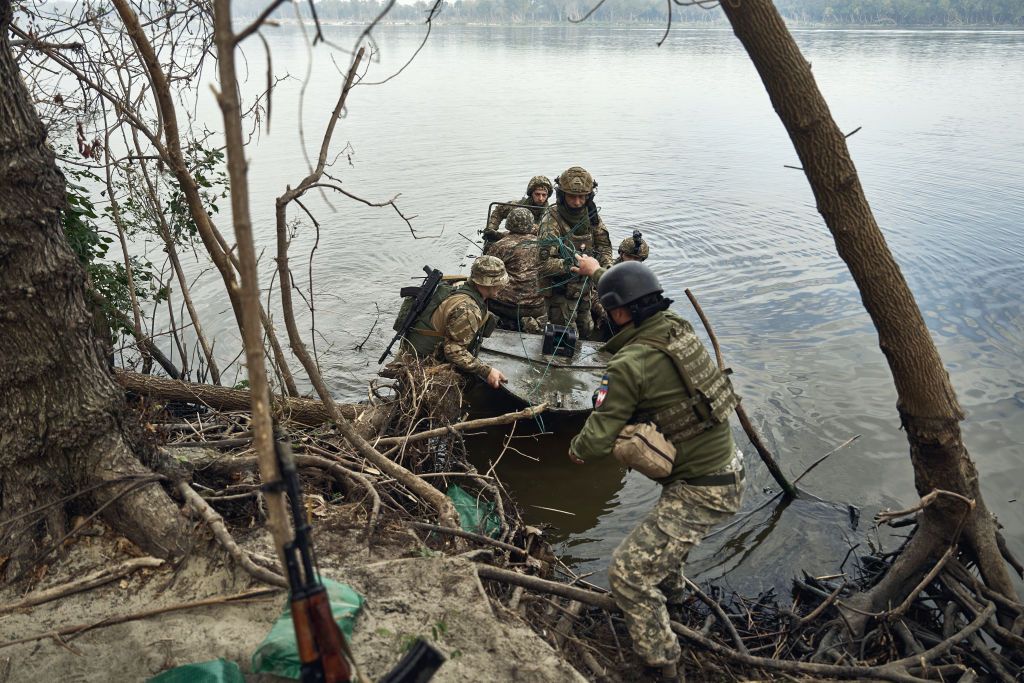
Right now, marines in the area think it’s a tall order. Crossing is hard when Russians are aiming drone-supported artillery at every likely landing, and advancing means trudging through a cover-free ribbon of wetland for half an hour. Even if they were to secure a proper bridgehead, there can be no thought of transporting vehicles while Russia still has air superiority and Ukraine still awaits its F-16s.
For now, the marines continue to hold on. Though the mission demands constant sacrifice, Western allies and some experts think that this is not an opportunity that Ukraine can afford to squander.
For Ukraine’s leaders, it’s more than that — a shred of hope to continue getting weapons.
Note from the author:
Hi, this is Igor Kossov, I hope you enjoyed reading our article.
I consider it a privilege to keep you informed about one of this century's greatest tragedies, Russia's ongoing invasion of Ukraine. With the help of my colleagues, I will continue to bring you in-depth insights into Ukraine's war effort, its international impacts, and the economic, social, and human cost of this war. But I cannot do it without your help. To support independent Ukrainian journalists, please consider becoming our patron. Thank you very much.












